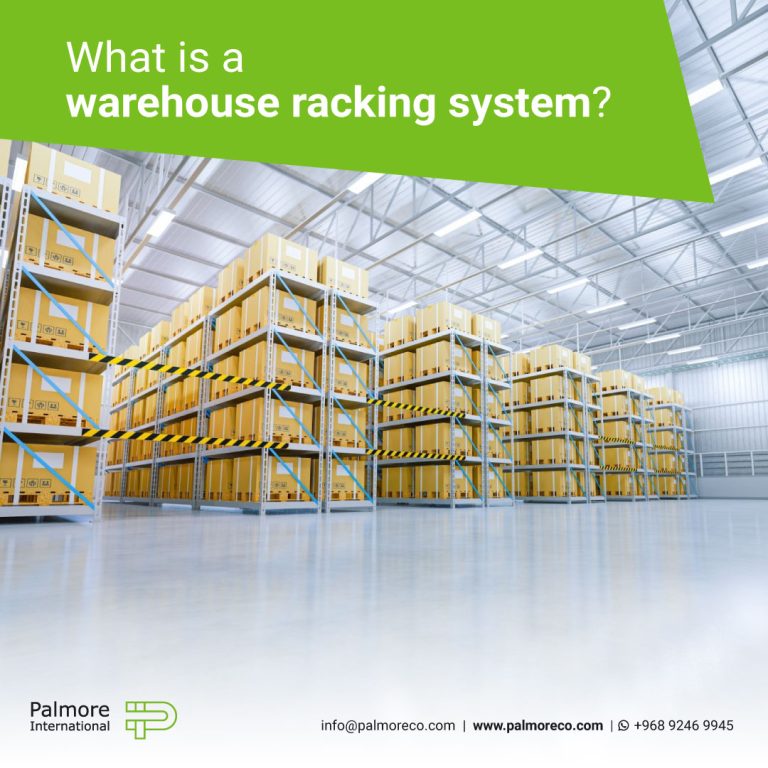
What is a warehouse racking system?
A racking system, also known as warehouse/storage or pallet racking, is a product handling system used for mass storage of goods. A racking system allows efficient utilization of space and provides easy access to stockpiled items for better inventory control. Whenever manufacturers do not have enough storage space for their products, they use racks for mass storage. It is usually only safe to stack products up to three layers before they become unstable. The height of the facility will determine the height of the racking system needed to store palletized products.
As well as being used for the handling of finished goods, rack systems can also be used to store raw materials and parts. In order to provide access to the greatest number of items, selective racking can be designed. There are also some distribution systems that utilize FIFO, which is the first-in, first-out method for controlling inventories. In a warehouse with racking, the oldest inventory items are accessible first, allowing them to be offloaded first.
What is a racking bay?
A bay in a racking system refers to the space between two columns. Cells are stacked vertically in a bay. Different levels of beams can be present in bays. In some cases, companies estimate the price of rack inspection and engineering services based on the number of bays in a warehouse.
What is a racking system advantage?
Besides maximizing storage space, there are other advantages that make racking systems worthy of use. The advantages of having additional storage space, a lower workforce effort, and a higher throughput can be quantified in terms of economic value or savings. Additionally, quality management and safety standards are two value-adding factors that do not directly result in savings. If you are interested in racking systems and still not sure about what is a racking system and what are its advantages read the following.
Efficient space utilization:
As mentioned above, a racking system uses the available unused vertical space. In warehouses built to contain racks, the ceilings are high so that the racks can be stacked higher.
Inventory organization: Products can be addressed and found easier in racking systems. Storing different types of goods without using a racking system takes large floor spaces. There are different types of racking systems that allow storing different types of goods in the minimum consumed space.
Keeping goods safe:
Using a racking system is necessary for keeping goods safe and avoiding damage. racking systems have gradually developed from wood into exceptionally stable metal structures. These structures are capable of stacking goods on top of each other from the floor to the ceiling.
Increased productivity:
Empty pallets can easily be found and accessed in racking systems, ٍ so all unnecessary movements will be eliminated and the productivity of employees will increase.
Read more about out solutions
Warehouse & Racking System
Warehouse automation:
Automating a warehouse begins with adapting a racking system. Forklifts and cranes that can be guided and integrate smart conveyor systems are used to achieve this. Manpower costs can be reduced significantly and business processes can be streamlined, especially for large distribution centers.
Organizing shipments and receiving supplies is easier and more convenient with palletization. Racking systems protect palletized materials from damage from mishandling, contact, or falling by containing them in a safe and secure location. In essence, pallets are protected by a metal frame that prevents them from shifting. Various designs of racking allow for easy access to goods without disturbing surrounding pallets, from two-deep designs up to excessively tall racking systems.
Increased safety:
Organizing products efficiently and providing a cataloging system make warehouse racking efficient at utilizing storage space and making it easier for you to pick what you need. Warehouse efficiency depends on safety measures, which are integral to the design of racking systems. In addition to sensors and alarms, guard rails, rack end protectors, rack guards, and column guards are also included in the safety measures.
Guard Rail Systems:
Guard rail systems are a great help when placed in potentially dangerous areas. They ar made of heavy duty rails and sturdy durable materials that are designed to avoid accidents and protect goods.
Sensors:
Sensors are used to alert warehouse personnel of dangerous situations using a flashing light and audible signal.
Warehouse Software:
There are also softwares designed to calculate safety risks in a warehouse and show the most productive methods for moving products. These softwares reduce the number of personnel manual actions. They also provide information about the most picked items and products and give a report of proper placement of goods and their location.

